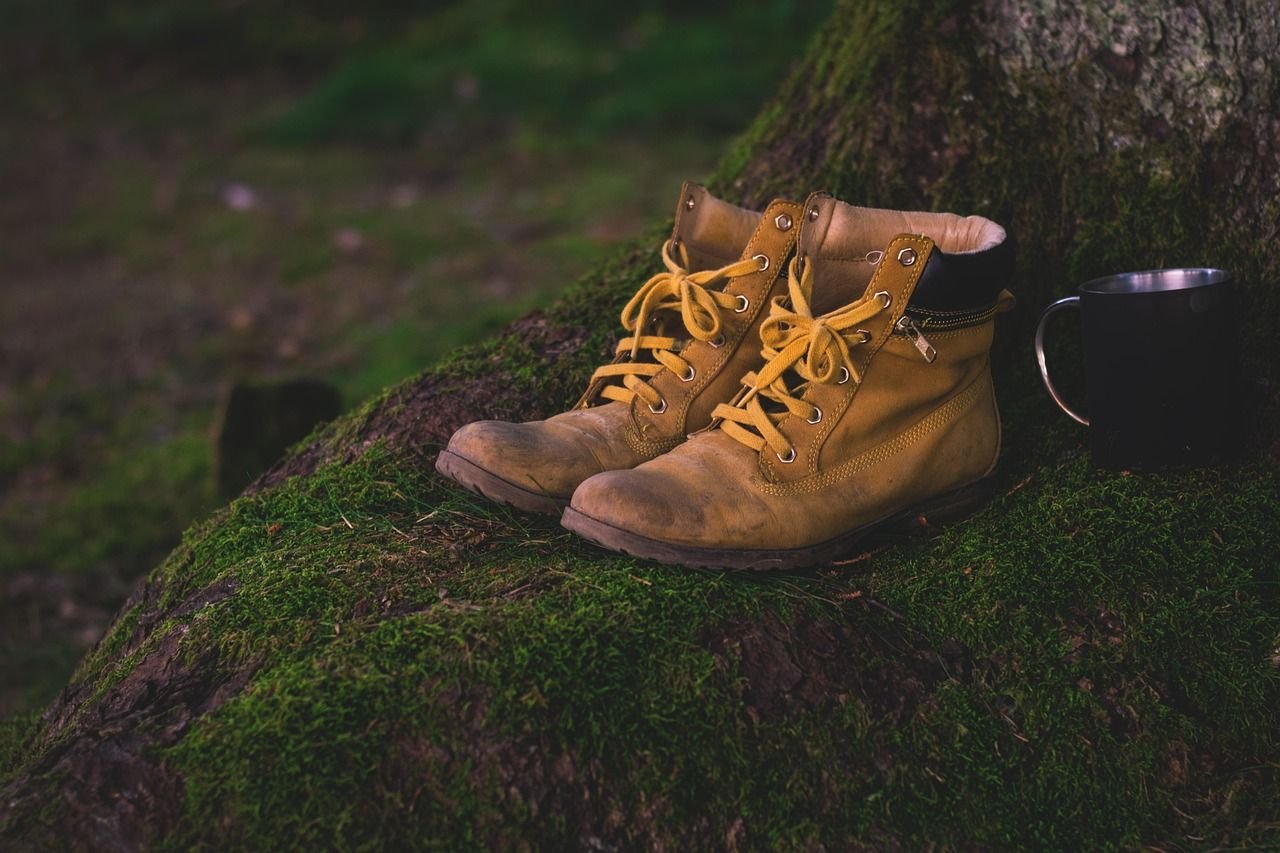Physical Address
304 North Cardinal St.
Dorchester Center, MA 02124


How to Overcome Adventure Fears While Traveling Solo
Discover proven strategies to conquer your travel anxieties and unlock extraordinary solo adventures worldwide. Transform fear into excitement with expert tips from seasoned solo travelers.
Have you ever stood at the edge of booking that dream solo adventure, only to feel your heart race with uncertainty? The cursor hovers over the “confirm” button while a symphony of “what-ifs” plays in your mind. You’re not alone in this moment of hesitation – countless would-be adventurers have faced this exact crossroads between comfort and extraordinary experiences.
Solo travel represents one of life’s most transformative journeys, yet the path to fearless exploration often feels blocked by invisible barriers we’ve constructed in our minds. The aroma of street food in Bangkok beckons, mountain trails in Patagonia whisper promises of breathtaking vistas, and ancient ruins in Cambodia hold secrets waiting to be discovered – but fear keeps us anchored to familiar shores.
Our brains are wired for survival, not adventure. The amygdala, that ancient alarm system nestled deep within our neural networks, perceives the unknown as potential threat. When you consider trekking through the Amazon rainforest or navigating the bustling souks of Marrakech alone, this primitive guardian sounds its warning bells.
The comfort zone paradox reveals itself most clearly in solo travel scenarios. We crave growth and meaningful experiences, yet our psychological programming urges us toward predictability and safety. This internal tug-of-war intensifies when we remove the safety net of traveling companions.
Sarah, a marketing executive from Toronto, described her pre-departure anxiety before her first solo trip to Nepal: “I spent weeks researching every possible scenario that could go wrong. The irony? My actual journey became the most empowering experience of my life, but I almost missed it because I was paralyzed by imaginary disasters.”
The key lies in understanding that these fears often exist only in our imagination. While healthy caution serves important purposes, excessive worry transforms potential adventures into missed opportunities.
Getting lost ranks among the top anxieties plaguing solo travelers, yet modern technology has transformed this age-old concern into a manageable challenge. The visceral fear of wandering aimlessly through unfamiliar streets, unable to communicate or find your way back, feels overwhelming – but reality tells a different story.
Digital navigation revolution has fundamentally changed the lost traveler’s experience. Offline maps through apps like Maps.me or Google Maps downloaded beforehand ensure you’re never truly without direction. GPS coordinates stored in your phone create virtual breadcrumbs leading back to your accommodation.
Beyond technology, practical strategies minimize getting-lost scenarios:
The silver lining of occasional disorientation often leads to unexpected discoveries. Marcus, an architect from Berlin, credits getting “magnificently lost” in Kyoto’s backstreets with discovering a hidden temple garden that became the highlight of his trip. “Sometimes the best adventures begin when your original plan falls apart,” he reflects.
Cultural navigation varies dramatically between destinations. In Tokyo, detailed station maps and English signage provide excellent guidance, while rural areas of Mongolia require different approaches entirely. Research your specific destination’s navigation challenges beforehand.
Emergency protocols provide additional peace of mind. Register with your embassy, share your itinerary with trusted contacts, and maintain emergency cash reserves. These safety nets allow you to explore more freely, knowing you have backup support systems.
The specter of inadequate preparation haunts many potential solo adventurers. This anxiety manifests as endless packing lists, excessive research, and the nagging sensation that you’ve forgotten something crucial. While thorough preparation certainly helps, perfectionism can become its own prison.
Smart preparation versus over-preparation requires finding the sweet spot between responsible planning and analysis paralysis. Focus on addressing genuine necessities rather than every conceivable scenario.
Essential preparation categories include:
Documentation and Legal Requirements
Health and Safety Foundations
Financial Security Systems
Communication and Technology Setup
Lisa, a teacher from Melbourne, learned valuable preparation lessons during her solo journey through Central America: “I over-packed my first bag with ‘just in case’ items I never used. Now I focus on essentials and trust that most things can be purchased locally if needed. This mindset shift transformed my travel experience from anxious to adventurous.”
Local resource research often proves more valuable than excessive packing. Understanding where to find pharmacies, equipment rentals, and local services provides practical solutions without carrying everything yourself.
Discomfort anxiety extends beyond physical concerns into emotional and social territories. The prospect of eating alone in restaurants, navigating social situations without companion support, or handling awkward cultural moments creates significant psychological barriers for many solo travelers.
Reframing discomfort as growth represents a fundamental mindset shift that transforms anxiety into opportunity. Those moments of slight unease often indicate you’re pushing boundaries and experiencing genuine personal development.
Restaurant dining strategies address one of the most common social anxieties:
Social interaction approaches can either minimize or maximize human connection based on your preferences:
David, a photographer from Vancouver, discovered unexpected comfort in his initial discomfort: “I used to avoid restaurants and stick to takeaway food because eating alone felt awkward. Now some of my most memorable travel moments happened during solo meals when I struck up conversations with locals or simply enjoyed peaceful observation of local life.”
Cultural sensitivity navigation requires balance between respecting local customs and maintaining personal authenticity. Research basic etiquette expectations while accepting that minor social missteps are normal learning experiences rather than disasters.
Entomological anxieties plague many adventure travelers, particularly those venturing into tropical or wilderness destinations. The thought of encountering spiders, mosquitoes, or exotic creepy-crawlies can overshadow otherwise appealing destinations.
Understanding realistic insect threats versus phobic responses helps maintain perspective. While certain insects carry diseases or deliver painful bites, the vast majority pose minimal danger when proper precautions are followed.
Practical insect management strategies include:
Personal Protection Systems
Accommodation Choices
Activity Timing Awareness
Jennifer, a nurse from Chicago, overcame her severe arachnophobia during a solo trip to Costa Rica: “I was terrified of spiders, but I didn’t want fear to prevent me from experiencing the rainforest. I learned to identify dangerous versus harmless species, carried appropriate gear, and gradually desensitized myself. Now I appreciate the incredible biodiversity that initially frightened me.”
Medical preparation includes understanding local disease vectors, carrying appropriate medications, and knowing symptoms of insect-borne illnesses. This knowledge provides confidence rather than paranoia.
Psychological approaches to insect anxiety often prove as important as physical preparation. Gradual exposure, education about beneficial insects, and focusing on incredible ecosystem diversity can transform fear into fascination.
Beginner anxiety strikes travelers attempting new activities during solo adventures. Whether learning to surf in Bali, trying rock climbing in Thailand, or attempting local cooking techniques, the fear of appearing incompetent or making mistakes can prevent enriching experiences.
Embracing beginner’s mind transforms perceived weakness into strength. Solo travel provides unique opportunities to try new activities without social pressure from friends or family members who might have established expectations.
Advantage of solo learning environments:
Beginner-friendly activity selection strategies help build confidence:
Structured Learning Environments
Cultural Activity Integration
Adventure Activity Preparation
Tom, an accountant from London, discovered unexpected joy in beginner experiences during his solo trip through Southeast Asia: “I was embarrassed about being terrible at surfing and rock climbing, but the local instructors and other beginners were incredibly supportive. Those ‘beginner moments’ created some of my strongest travel memories and friendships.”
Failure reframing involves viewing mistakes as integral parts of the learning process rather than personal shortcomings. Solo travel provides safe spaces for experimentation and growth without external judgment.
Physical fitness anxiety prevents many from attempting solo adventures involving hiking, cycling, or other demanding activities. The worry about being unable to keep up, requiring rescue, or experiencing physical distress creates significant psychological barriers.
Realistic fitness assessment involves honestly evaluating your current capabilities while avoiding perfectionist standards that postpone adventures indefinitely. You don’t need elite athlete status for most travel adventures – adequate preparation and appropriate activity selection matter more.
Gradual fitness building approaches:
Pre-Travel Conditioning
Activity Scaling Strategies
Equipment and Support Systems
Alternative adventure options accommodate various fitness levels while maintaining exciting experiences:
Amanda, a desk worker from Phoenix, transformed her fitness fears into adventure confidence: “I was convinced I was too out of shape for hiking in Peru, but I started with local trail walks and gradually built endurance. By departure time, I felt prepared and excited rather than anxious about physical challenges.”
Listen to your body wisdom involves recognizing the difference between normal exercise discomfort and concerning pain signals. Solo travel requires enhanced body awareness since you’re your own primary safety monitor.
Wildlife encounter anxieties range from rational cautions about genuinely dangerous animals to exaggerated fears based on media sensationalism. Understanding actual wildlife risks versus perceived threats helps solo travelers make informed decisions about adventure destinations.
Risk assessment reality checks involve researching specific wildlife populations in your intended destinations, understanding seasonal behavior patterns, and learning appropriate response protocols for different animal encounters.
Regional wildlife awareness:
African Safari Destinations
Tropical Rainforest Environments
Mountain and Wilderness Areas
Marine Environment Precautions
Practical wildlife safety measures focus on prevention rather than confrontation:
Carlos, a biologist from Madrid, balances wildlife respect with adventure enthusiasm: “Understanding animal behavior transforms fear into fascination. I’ve encountered everything from jaguars in the Amazon to polar bears in Svalbard. Knowledge and preparation are your best tools – not fear avoidance.”
Emergency response preparation includes carrying appropriate communication devices, understanding evacuation procedures, and maintaining comprehensive travel insurance covering wildlife encounter medical treatment.
Female solo hiking combines gender-specific safety concerns with general wilderness anxieties, creating complex psychological barriers that require nuanced approaches. While legitimate safety considerations exist, many fears stem from societal messaging rather than statistical realities.
Safety statistics versus perception gaps reveal that solo hiking, including for women, involves lower crime rates than many urban environments. However, smart preparation and awareness remain essential components of safe solo adventures.
Practical female solo hiking strategies:
Pre-Hike Communication Systems
Trail Selection Criteria
Equipment and Preparation Specifics
Confidence Building Approaches
Cultural considerations vary dramatically between destinations. Research local attitudes toward solo female travelers and adjust plans accordingly while maintaining adventure goals.
Rachel, a software engineer from Seattle, overcame her solo hiking fears through graduated exposure: “I started with crowded day hikes near the city, then progressed to longer trails. Now I’ve hiked solo through Patagonia and the Himalayas. The key was building confidence gradually rather than jumping into extreme challenges immediately.”
Community support systems include online forums, local hiking groups, and female-specific adventure communities that provide encouragement, practical advice, and sometimes trail partnerships.
Successful solo outdoor adventures require broader skill sets than group travel experiences. You become navigator, safety officer, equipment manager, and decision maker simultaneously – roles that demand preparation and confidence.
Weather monitoring and response protocols become crucial when you’re responsible for your own safety decisions:
Microclimate awareness involves understanding how altitude, water proximity, and terrain features create localized weather patterns different from general forecasts.
Equipment layering systems allow adaptation to changing conditions without carrying excessive gear weight:
Navigation redundancy ensures you maintain directional awareness even when primary systems fail:
Water procurement and purification skills become essential for extended outdoor adventures:
Food planning and preparation for solo outdoor adventures requires balancing nutrition, weight, and preparation complexity:
Lightweight nutrition strategies:
Michael, a park ranger from Colorado, emphasizes practical outdoor skill development: “Solo outdoor adventures require self-reliance skills that group travel often masks. Learning basic navigation, weather assessment, and emergency response transforms you from tourist to true adventurer. These skills build confidence that extends far beyond outdoor activities.”
Emergency response protocols include signaling techniques, basic first aid, and evacuation planning appropriate to your adventure location and duration.
Psychological resilience often determines adventure success more than physical preparation or equipment quality. Learning to manage stress responses, adapt to unexpected situations, and maintain positive mindset during challenges separates confident solo travelers from anxious ones.
Stress response understanding involves recognizing how your body and mind react to unfamiliar or challenging situations, then developing healthy coping mechanisms that support rather than hinder your adventures.
Mindfulness and present-moment awareness techniques help manage anxiety and enhance experience appreciation:
Breathing regulation practices:
Adaptability development prepares you for the inevitable changes and challenges that adventure travel presents:
Flexible planning approaches:
Problem-solving confidence develops through practice and successful challenge navigation:
Emotional regulation during solo adventures requires self-awareness and practical coping strategies:
Loneliness management techniques:
Patricia, a therapist from Austin, applies professional emotional regulation skills to her solo adventures: “Understanding your emotional patterns and triggers before departure helps you respond rather than react to challenging situations. Solo travel becomes a powerful tool for personal growth when you approach it with emotional intelligence.”
Confidence building through small victories involves recognizing and celebrating successful navigation of challenges, building psychological momentum for larger adventures.
Beyond conquering fears, successful solo adventures require practical knowledge that enhances rather than complicates your experiences. Understanding cultural nuances, legal requirements, and logistical systems transforms potential obstacles into smooth adventure components.
Visa and documentation requirements vary dramatically between destinations and change frequently based on international relations and health considerations:
Documentation strategies:
Currency and payment system navigation:
Financial preparation approaches:
Communication system setup ensures you maintain necessary connections while avoiding excessive home dependence:
Technology integration:
Transportation system understanding varies enormously between urban, rural, and wilderness destinations:
Local mobility options:
Accommodation strategy development balances safety, budget, and cultural immersion goals:
Lodging selection criteria:
James, a teacher from Dublin, developed systematic approach to practical travel preparation: “I create destination-specific checklists covering everything from electrical adapter requirements to local tipping customs. This preparation allows me to focus on adventure experiences rather than logistical stress during my trips.”
Local law and custom awareness prevents inadvertent cultural insensitivity or legal complications while enhancing respect and appreciation for destination cultures.
Understanding seasonal patterns dramatically impacts adventure quality, safety, and cost. Solo travelers have flexibility advantages in timing their adventures to optimize weather, crowds, and cultural events.
Climate pattern research extends beyond basic temperature and rainfall data to include seasonal variations affecting specific activities:
Adventure activity seasons:
Hiking and Trekking Optimization:
Water Activity Timing:
Cultural Event Calendar Integration:
Wildlife observation seasons vary dramatically based on migration patterns, breeding cycles, and climate responses:
Optimal wildlife viewing windows:
Cost optimization through seasonal awareness provides budget-conscious travelers with significant savings opportunities:
Budget-friendly seasonal strategies:
Sophie, a graphic designer from Montreal, masters seasonal travel timing: “I research not just weather patterns but cultural calendars and local economic cycles. Visiting Morocco during shoulder season meant perfect hiking weather, fewer crowds, and meaningful interactions with locals who had more time for cultural exchange.”
Climate change adaptation requires staying updated on shifting weather patterns and environmental conditions that affect traditional seasonal recommendations.
Authentic souvenir shopping transcends tourist trap purchases to become meaningful cultural exchange experiences. Solo travelers often have advantages in accessing local markets and building relationships with artisans.
Market navigation strategies help solo travelers find authentic crafts while avoiding tourist-focused overpricing:
Local market identification:
Artisan workshop discovery provides opportunities for deeper cultural understanding and unique purchase options:
Craft workshop experiences:
Negotiation cultural awareness varies dramatically between cultures and requires sensitivity to local customs:
Respectful bargaining approaches:
Quality assessment skills help distinguish authentic craftsmanship from mass-produced tourist items:
Authenticity evaluation techniques:
Practical shipping and transport considerations ensure your cultural treasures reach home safely:
International shipping strategies:
Ethical purchasing considerations involve understanding the cultural and economic impact of your souvenir choices:
Responsible tourism shopping:
Maria, an anthropologist from Barcelona, approaches souvenir shopping as cultural research: “I spend time learning about traditional crafts before visiting markets. This knowledge helps me appreciate quality, ask meaningful questions, and build relationships with artisans. My souvenirs become cultural education tools and conversation starters at home.”
Digital documentation of artisan stories and craft techniques creates lasting memories beyond physical purchases, honoring the cultural exchange aspects of authentic souvenir shopping.
Kazan, the capital of Tatarstan, represents one of Russia’s most fascinating cultural fusion destinations, where Orthodox Christianity meets Islam, and Russian traditions blend seamlessly with Tatar heritage. This unique cultural intersection creates extraordinary experiences for adventurous solo travelers.
Architectural marvel diversity showcases Kazan’s multicultural identity through stunning visual contrasts:
The Kazan Kremlin UNESCO World Heritage Site features the remarkable juxtaposition of the Annunciation Cathedral and the Qol Sharif Mosque within the same fortress walls – a rare example of religious architectural harmony.
Cultural fusion manifestations:
Language landscape complexity makes Kazan linguistically fascinating for culturally curious travelers:
Bilingual society dynamics:
Traditional craft heritage continues through contemporary artisan communities:
Tatar handicraft traditions:
Historical significance layers reveal Kazan’s complex past through multiple cultural lenses:
Cultural timeline highlights:
Festival and celebration calendar offers solo travelers numerous cultural immersion opportunities:
Annual cultural events:
Culinary adventure opportunities provide accessible entry points into Kazan’s cultural complexity:
Traditional dish discoveries:
Sports and recreational culture includes both traditional and contemporary activities:
Cultural recreation options:
Viktor, a cultural historian from St. Petersburg, describes Kazan’s unique appeal: “Kazan represents successful multiculturalism in action. Rather than cultural assimilation, you witness genuine synthesis where different traditions strengthen rather than diminish each other. It’s a living laboratory of cultural harmony.”
Things to Know Before Visiting Kazan:
Practical cultural preparation:
Language preparation strategies:
How do I overcome fear of traveling alone for the first time? Start with shorter, closer-to-home adventures to build confidence gradually. Choose destinations with good infrastructure and English-speaking populations for initial solo trips. Join online solo travel communities for support and advice from experienced solo adventurers.
What safety precautions should solo travelers take? Share detailed itineraries with trusted contacts, maintain regular communication schedules, carry emergency communication devices, research local emergency services, and trust your instincts about potentially dangerous situations.
How much more expensive is solo travel compared to traveling with companions? Solo travel costs vary significantly by destination and travel style. While you won’t split accommodation costs, many activities offer solo-friendly pricing. Budget-conscious strategies include staying in hostels, using public transportation, eating at local markets, and choosing destinations with favorable exchange rates.
What are the best destinations for first-time solo travelers? New Zealand, Japan, Iceland, Singapore, and Canada offer excellent infrastructure, safety records, and English-speaking populations. These destinations provide adventure opportunities with reliable support systems for inexperienced solo travelers.
How do I deal with loneliness during solo adventures? Stay in accommodations that encourage social interaction like hostels or guesthouses, participate in group activities or tours, engage with locals through cultural experiences, maintain reasonable contact with home, and learn to appreciate solitude as personal growth opportunity.
What should I do if I get sick or injured while traveling alone? Carry comprehensive travel insurance covering medical emergencies and evacuation, research local healthcare systems before departure, maintain emergency contact lists including local medical facilities, carry basic medications and first aid supplies, and know how to access embassy assistance if needed.
How do I plan a solo adventure on a limited budget? Travel during shoulder seasons for better prices, use budget accommodation options like hostels or homestays, cook your own meals occasionally, take advantage of free activities like hiking or city walking tours, use public transportation, and consider destinations with favorable exchange rates.
Is solo travel safe for women? Solo female travel safety depends on destination research, cultural awareness, and practical precautions. Many women travel solo successfully worldwide by choosing appropriate destinations, staying aware of their surroundings, dressing appropriately for local customs, and trusting their instincts about potentially risky situations.
What gear is essential for solo adventure travel? Essential gear varies by activity but generally includes reliable navigation tools, emergency communication devices, appropriate clothing layers, quality footwear, first aid supplies, portable chargers, and backup documentation. Research specific gear requirements for your intended activities and destinations.
The path from fear to fearless solo adventure requires courage, preparation, and the willingness to step beyond familiar boundaries. Every experienced solo traveler once stood where you stand now – contemplating that first brave step into unknown territories.
Remember that fear often disguises itself as reasonable caution, but genuine preparation transforms anxiety into excitement. The strategies outlined in this guide provide practical frameworks for addressing specific concerns while building overall confidence in your ability to navigate adventures independently.
Your comfort zone, while providing security, also limits the extraordinary experiences waiting beyond its borders. Solo adventure travel offers unparalleled opportunities for personal growth, cultural understanding, and self-discovery that group travel simply cannot replicate.
The wilderness trails, cultural markets, ancient ruins, and hidden gems scattered across our planet await your exploration. Armed with knowledge, preparation, and courage, you’re ready to transform travel fears into adventure fuel.
Ready to book your first fearless solo adventure? Visit travelgoeasy.net for exclusive deals on flights, accommodations, and transportation that make solo travel both affordable and extraordinary. Our platform specializes in supporting independent travelers with comprehensive booking services and expert destination guidance.
Your adventure story begins with a single brave decision. Make today the day you choose courage over comfort, growth over security, and extraordinary experiences over ordinary limitations.
This article is exclusively created for travelgoeasy.net and protected by copyright. All content, including text, strategies, and recommendations, is proprietary and intended solely for use on our platform. Unauthorized reproduction or distribution is strictly prohibited.
Visit travelgoeasy.net for exclusive deals on flights, accommodations, and transportation that make solo travel both affordable and extraordinary. Our platform specializes in supporting independent travelers with comprehensive booking services and expert destination guidance.





[…] Pack reusable items including water bottles, shopping bags, utensils, and toiletry containers to minimize single-use plastic consumption during your travels.click here […]